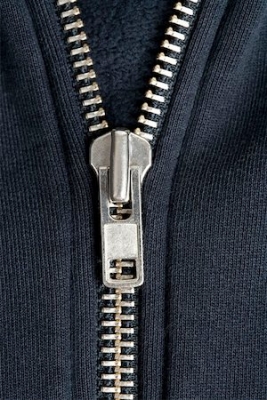
The US Navy pioneered the use of zipper fasteners in 1918 when it ordered 10,000 of them to do up wind cheating flying suits.
The first slide Fastener – the ancestor of the zip – had been devised by an American engineer, Whitcomb Judson, in 1893.
He designed a clasp locker as a quick method of doing up the men’s are high buttoned boots that were than fashionable. But his fastener, which used a slider to link hooks and rings was cumbersome.
The breakthrough which resulted in the modern zip came 20 years later when a Swedish engineer, Gideon Sundback, was employed by Judson to improve the fastener. Sundback designed the so called Hookless 2, almost the same as the modern zip, and developed machinery for making the teeth and fixing them to tape.
In 1918 the U.S. Navy put in its order, and the zip was on its way to becoming one of the most common fastening devices.
The standards zip consists of two fabric strips with metal or plastic teeth along the edge. The teeth on each strip are staggered so that they can dovetail together. They have a projection on one side and a hollow on the other so that when they are meshed together the projections fit into the hollows.
When zip is being closed, the two strips enter the metal slider at an angle, and are brought together so they interlock.
When the slider is moved to open the zip, the reverse occurs. The interlocked teeth enter the bottom of the slider and are angled away so the unlock.
Picture Credit : Google

